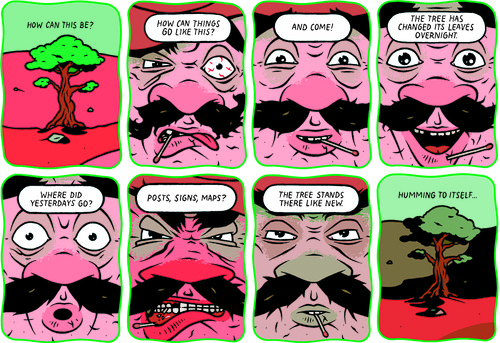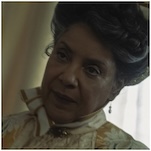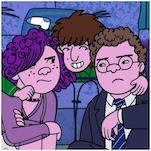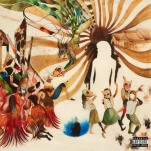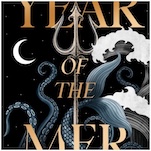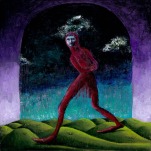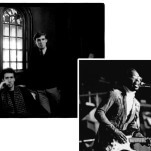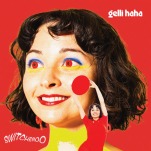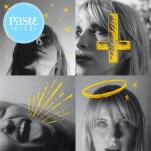The Book of Hope by Tommi Musturi

Writer/Artist: Tommi Musturi (translated by Pauliina Haasjoki)
Publisher: Fantagraphics
Release Date: February 1, 2016
Although renowned in his native Finland, cartoonist Tommi Musturi has published little of his oeuvre in English, so Fantagraphics’ translation and beautiful printing of this five-part novel should increase his profile in Anglo countries substantially. The Book of Hope reads like a serialized newspaper comic; with few exceptions, each two-page horizontal spread contains four four-panel strips. Plot isn’t very important. You could digest each set of 16 panels in isolated readings, or keep the book in the bathroom and dip in and out of its rambling progression. It would be easy to miss that each section (its five parts were originally published separately) has its own color, both literally and (more) figuratively. But if you read the book as a piece, like a Peanuts compilation, the sense of what Musturi’s approaches sharpens like a fresh lens clicked into place at the optometrist.
-

-

-

-

-

-

-

-

-

-

-

-

-

-

-

-

-

-

-

-

-

-

-

-

-

-

-

-

-

-

-

-

-

-

-

-

-

-

-

-


